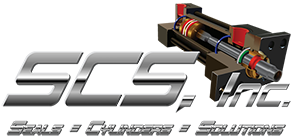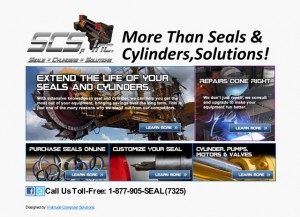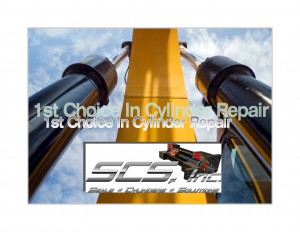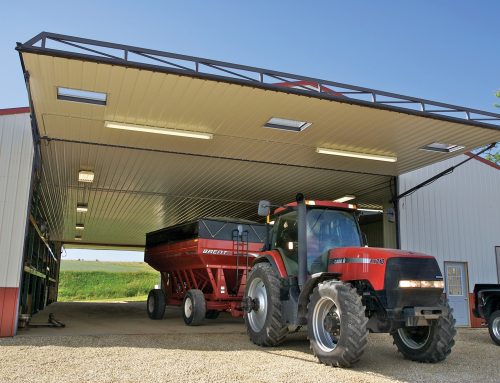Water Hydraulics: Benefits and Limitations
What is in this article?:
- Water Hydraulics: Benefits and Limitations
- Valves for water
Water hydraulics combines the high power density of hydraulics with the clean operation. But water’s inherent physical properties present design challenges.
Water-based hydraulic systems traditionally have been used in longwall mining applications and in hot-metal areas of steel mills. The obvious advantage of water systems in these industries is their fire resistance. Water-based hydraulic systems also have not-so-obvious cost advantages over oil based fluid. First, non-toxic, biodegradable synthetic additives cost much less per-gallon than oil based fluids do. One gallon of concentrate can make 20 gal of a solution containing 95% water and 5% additive..
Considering the costs associated with preventing and cleaning up environmental contamination, water-based hydraulic systems hold the potential for tremendous cost savings at the plant level. Oil that has leaked or been drained from a system can’t just be dumped down the drain. It must be collected, properly contained, and hauled away by a certified carrier — an expensive proposition. Water containing synthetic additives, however, can by dumped into plant effluent systems.
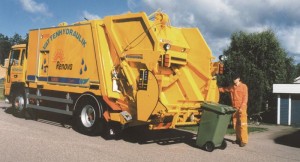

Cost savings at the plant level don’t stop at the lower cost of the fluid and its disposal. Because water-based hydraulic fluid consists of 10 parts water and one part synthetic additive, 5 gal of additive mixes with water to make 100 gallons of water-based fluid. A 50-gal container is certainly easier to handle than two 55-gal drums, so warehousing is simpler, cleaner, and less cluttered. Transportation costs also are lower.
Other potential plant-wide savings include improved safety for workers because the wate rbased fluid is non-toxic as well as non-flammable. These attributes can reduce plant insurance rates. Spills cost less to clean up because granular absorbents or absorbent socks are unnecessary.
Nevertheless, adding an anti-freeze to a water-based fluid can depress its freezing temperature to well below 32°F. Ethylene glycol — used in automotive anti-freeze — is toxic and is not biodegradable, so its use for anti-freeze in water-based hydraulic fluid would defeat the environmental advantage water-based fluid has. Propylene glycol is an alternative, which is not toxic and is biodegradable. It costs more than ethylene glycol and is not quite as effective an antifreeze, so it must be used in slightly higher concentrations.
Two more techniques to reduce freezing potential are to keep fluid circulating continuously and use hose where practical. Hose insulates fluid from exterior temperatures; metal tubing provides little insulation.
Sealing the system
Two more perceived problems with water hydraulic systems are bacterial infestation and difficulty in maintain proper concentrations. Sealing the system from atmosphere can hold bacterial growth in check. Addition of an anti-bacterial agent to the fluid can have a lasting effect on preventing bacterial buildup if air is excluded from the system. Sealing the system from the atmosphere also keeps out most airborne contaminants — a common cause of component failure.
A sealed reservoir eliminates another problem suffered by many hydraulic systems: water ingression. Dissolved suspended water contaminates hydraulic oil. The only detriment water ingression has in a water-based system, though, is that is alters the concentration of additive. Water ingression is still undesirable, but its occurrence is far less detrimental in a water-based system than in one using oil.
This addresses another misconception about water-based systems: water-based systems must be closely monitored to ensure that the additive concentration stays within tolerance. That is because water evaporates from the reservoir more readily than the additive does. Consequently, water evaporation causes the additive concentration to increase. When new fluid is added to a system, samples of the existing fluid must be taken to determine the concentration of additive in solution. These results then reveal the ratio of additive to fluid that must be added so that fluid concentration is correct.
With a system that sealed from the atmosphere, the evaporation problem is virtually eliminated. Fluid that escapes by leakage is a solution containing water and additive. Therefore, the quantity of fluid in the system changes, but concentration does not. System fluid is replenished simply by adding a pre-mixed solution of water and additive to the reservoir.
Special considerations
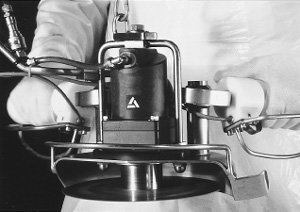

Water-based hydraulic systems can be more prone to pump cavitation if they are not properly designed. Generous porting and other passageways should be provided to keep fluid velocities less than 20 ft/sec — preferably, below 15 ft/sec in pressure lines. Velocity in suction lines, in general, should not exceed 2 to 3 ft/sec. Velocities in return lines should be held less than 5 to10 ft/sec. Higher return velocities can promote foaming when fluid re-enters the reservoir. Components should also be carefully sized because rapid changes in fluid pressure and velocity can cause dissolved air to precipitate from solution and cause damage similar to that produced by cavitation.
An important consideration for water-based systems is that major components should be designed specifically for use with water fluid, rather than modified from versions originally intended for oil service. An oil valve retrofitted for water service may work, but its compromise in performance will be obvious when compared to a valve designed for water service.
Tubing, hose, and fittings usually can be identical to those for oil systems. Pumps, valves, and actuators for water service, however, exhibit some significant differences from components for oil systems. Pump gears, for example, should be made of super-hard alloys to resist wear. A pump’s gear face should be wider than that of an oil pump because water’s low viscosity requires a larger area to form an adequate lubricant film. Cylinders used in water systems should have bronze-clad pistons to minimize wear between pistons and cylinder walls. Spring- or O-ring-energized seals should be used to minimized leakage across the piston.
Valves for water
Valves for water-based fluid usually are packed with seals separating metal parts to prevent metal-to-metal contact. This is because water – even with lubricant additives – does not provide the full-film lubrication of oil. In valves for oil service, lapped spools can be used because oil forms a film on metal components to keep surfaces separated. Metal surfaces in relative motion in valves for water-based fluid are separated by bearing-type materials. Moreover, because of its much lower viscosity, water can readily leak through the clearances found in non-packed valves for oil service.
Valves for water service also are slightly larger than those for oil. This may be another reason why water-based systems have not gained wide acceptance. Originally, the larger size of components for water-based fluid created a handicap when designing systems, and more costly construction inflated prices of valves for water-based fluid to three times or more that of valves for oil. Now, however, valve sizes are comparable to those for oil. Many valves are available with standard NFPA footprints. The price differential has also become less. Components for water-based fluid still may cost perhaps 3% more than those for oil systems, but this may be a bargain when you consider the cost-saving potential of water-based systems.
Cartridge valves that fit into cast, ductile-iron bodies also are available, as are lapped-spool versions of interchangeable cartridges. Special materials are used instead of seals when proportional control is needed, because seals can promote unacceptable stick-slip operation.
The spool in a valve for oil service can ride directly in the valve body. Proportional valves for water-based fluid, though often have a spool that rides in a cast sleeve instead of in the valve body. The sleeve wears because it is softer than the spool. Both sleeve and spool are hardened to RC 6-72 to reduce wear rates. Valves for water-based fluid also have longer lands to reduce leakage.
Fluid leakage
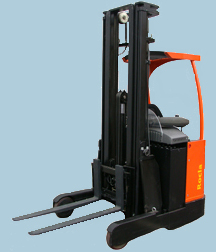
Leakage continues to be a nagging problem in many hydraulic system. New seal materials and designs, and O-ring face-seal fittings are powerful weapons in the battle against leakage. But the battle is far from over because of misapplication, improper installation, or simple lack of understanding. Although there’s no excuse for leakage in most systems, it still occurs. Assuming that leakage will not be eliminated in the near future, water-based fluid can dramatically reduce the costs associated with leakage.
Internal leakage can be just as wasteful. For example, lapped-spool valves are designed to leak because the leakage creates the oil film necessary to lubricant moving parts. This leakage can carburize the oil by generating heat. Internal leakage typically is routed back to tank, so this technique transforms mechanical energy into heat instead of useful work. Using a stainless steel spool with PTFE seals in a valve for water-based fluid eliminates the need for clearance between moving components. Because there is no clearance, there is no internal leakage.
Packed-spool valves eliminate leakage and the need for pilot-operated check valves. When the valve centers to an all-ports-blocked condition, pilot-operated checks are not needed to prevent cylinder drift. If there is no port-to-port leakage, the cylinder will not drift.
But beyond the obvious and intangible costs of fluid leakage, disposing of the fluid that has leaked from a system becomes a concern. Allowing hydraulic oil to enter plant effluent systems becomes an expensive proposition when removal and disposal costs are considered. Realizing that cleanup and disposal costs will only go up, and that the price of oil is unstable suggests that water-based hydraulics can be an economical solution to environmental problems.
Accepting water hydraulics
Even the most expensive water additives become attractive when designers realize that 1 gal of concentrate can make 20 gal of fluid. No wonder, then, that interest in water-based fluids often centers around cost saving potential. However, designers must also realize that they can’t just change the fluid in their systems from oil to water without making other substantial changes.
What are viewed as disadvantages are really different rules that apply to water-based hydraulic systems. Designers probably resist learning more about water-based hydraulics because they are intimidated by all the work required to learn how to design a new system or retrofit an older system. By closing their minds to this different technology, they may miss the many other advantages of water-based fluid beyond initial cost. Now that environmental concerns have added disposal costs to the price of hydraulic fluids, water-based hydraulics has again become a hot topic.
Fighting freeze
Water-based hydraulic systems do, of course, have limits to their applications. One limitation is the potential of freezing. This possibility is probably the most significant blockade to more widespread application of water-based systems, especially in the mobile equipment industry. Longwall mining is by far the largest sector of mobile equipment that has been able to take advantage of water-based systems. Temperatures underground do not approach the freezing point of water, and fire resistance is essential. Mobile and even marine equipment used in temperate climates could cash in one the advantages of water based systems, but there is no guarantee that such equipment always will be used in above-freezing temperatures.
Reservoir design
Most hydraulic systems are best served by a pressurized cylindrical reservoir. Additional cost is the main reason why they are not used more extensively. With a cylindrical reservoir, condensation forming inside the top runs down the sides and into the sump. By elevating one end of the reservoir, solid contaminants collect at its lowest point and can be removed through a cleanout box. The cylindrical shape also withstands internal pressure without depending on the struts and stiffeners that can provide areas for contaminants to congregate in a rectangular reservoir.
A sealed reservoir must allow the fluid level to rise and fall without allowing air to repeatedly enter and exit. Several methods can accommodate a variable fluid level, but a simple and inexpensive approach uses a breather and two check valves, each with a different spring rate.
With a sealed system, fluid level is highest at initial startup, before fluid has been pumped to the system. When the system is started initially, air enters the reservoir through a breather as fluid leaves the reservoir. After fluid has been circulated through the system and returns to the reservoir, air is not allowed to exit through the breather. Instead, the air pocket becomes pressurized. When the fluid level rises further, pressure of the air pocket eventually will reach 3 to 5 psi. At this pressure, air exits the reservoir through a check valve to avoid overpressurizing the reservoir.
Pressure in the reservoir serves the additional function of precharging the main pump. The positive pressure in the suction line prevents pump cavitation. When the fluid level drops, instead of drawing in more air, the air pocket expands, which lowers the precharge pressure. Over time, the only air in the system is that which entered initially.
Special considerations for water hydraulics |
|||
| Water-based hydraulic systems can be more prone to pump cavitation if they are not properly designed. Points to consider: | |||
| Porting | Velocity | Sizing | Components |
| Porting and passageways should be provided to keep fluid velocities below 20 ft/sec — preferably, less than 15 ft/sec in pressure lines. | Velocity in suction lines should generally not exceed 2-3 ft/sec. Velocities in return lines should be held less than 5-10 ft/sec. Higher return velocities can promote foaming when fluid reenters the reservoir. | Components should be carefully sized: rapid changes in fluid pressure and velocity can cause dissolved air to precipitate from solution and cause damage similar to cavitation. | Major components should be designed specifically for use with water fluid, rather than modified from versions originally intended for oil service.Tubing, hose, and fittings usually can be identical to those for oil systems. Pumps, valves, and actuators for water service, however, exhibit some significant differences from components for oil systems. |
